- History / Culture
- Gourmet
- Hot Springs
Exploring the Rich History and Attractions of Kinosaki Onsen
Contributor : Kristina
Kinosaki Onsen, located in Kinosaki Town, Hyogo Prefecture, is a hot spring area known for its unique 'soto-yu' (public bathhouse) culture, a tradition dating back to the Heian period (794 to 1185). This distinct feature and the town's tolerance towards tattoos have made Kinosaki Onsen a favorite among international tourists. This article invites you to embrace the tradition of wearing yukata while strolling through town, indulging in delicious seafood, embarking on a ropeway adventure, and discovering local cafes.
A Brief History of Kinosaki Onsen
Kinosaki Onsen's history is rich and storied, dating back over 1300 years.
It is told that in 720 AD, a Buddhist monk named Douchi Shonin visited Kinosaki and, through a thousand-day spiritual practice, caused hot springs to gush forth, establishing what we now know as Kinosaki Onsen. While there are various theories about the hot spring's origin, some historians believe this legend indicates that an earthquake led to its discovery.
Throughout its 1300-year history since its founding, Kinosaki Onsen has faced numerous challenges, but none as significant as the Kitatajima Earthquake of 1925.
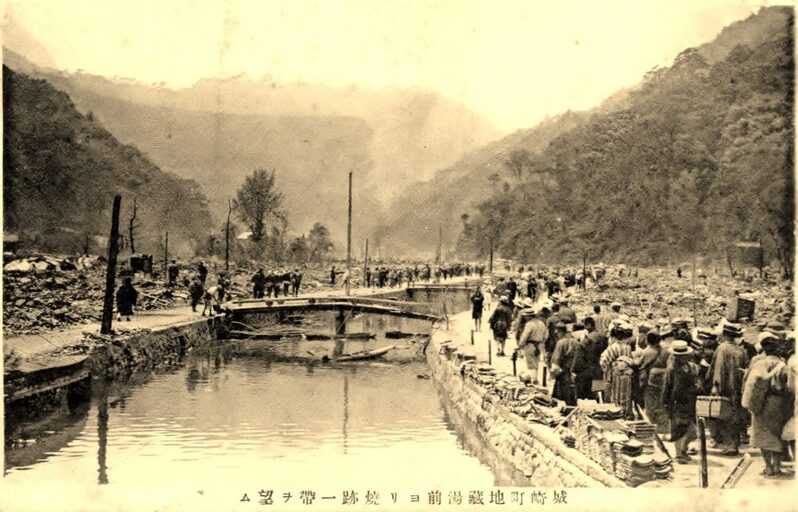
The aftermath of the Kitatajima Earthquake of 1925 in Kinosaki Onsen
On May 23, 1925, the Kitatajima Earthquake struck the Toyooka and Kinosaki area, causing widespread devastation. However, the town of Kinosaki, with its beautiful wooden constructions, rose from the ashes and was rebuilt by local groups tirelessly working toward recovery and reconstruction. This spirit of resilience continues to shape the town's identity, making it a must-visit destination.
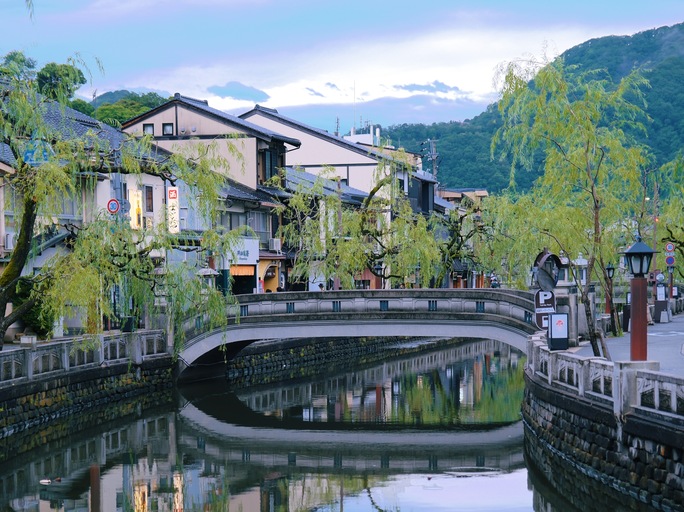
Kinosaki Onsen these days
Despite enduring such devastating losses, Kinosaki Onsen owes its relatively rapid recovery to the spirit of mutual aid among its residents. This spirit continues even in modern times. It embodies the concept that "the station is the entrance, the streets are the hallways, the inns are the rooms, and the souvenir shops are the stores." This creates a comprehensive tourist experience where the entire town functions as a singular, large-scale attraction with around 80 accommodation facilities and many footbaths, souvenir shops, and eateries. Let's take a quick look over the area!
Easy Access to Kinosaki Onsen from Kyoto, Osaka, and Kobe
Kinosaki Onsen is conveniently located 2.5 to 3 hours from Kobe, Osaka, and Kyoto. It is easily accessible for travelers. Even those from Tokyo using Kounotori Tajima Airport can reach the town in approximately 2 hours. With public transportation options like the JR Limited Express train and highway buses, getting to Kinosaki Onsen is a breeze.
If you have heavy luggage with you, do not worry. You can drop off your baggage at the Kinosaki Onsen Ryokan Information Center in front of the station. The center offers a service to deliver your baggage to the inn where you stay for 200 yen per item (service available until 14:00 at Union member inns).
Kinosaki Onsen can also be a great place to explore the seaside part of Hyogo Prefecture and enjoy Kasumi crabs, boat tours around the UNESCO-certified San'in Coast Geopark, local cafes, and more in Kami Town. Find more information in my other article here (https://www.hyogo-tourism.jp/world/reviews/15137)
What to Expect in Kinosaki Onsen: Yukata Culture
The town's centerpiece is the Otani River, flanked by willow trees, taiko bridges, and charming three-story wooden ryokan (traditional inns), creating a unique and enchanting atmosphere.
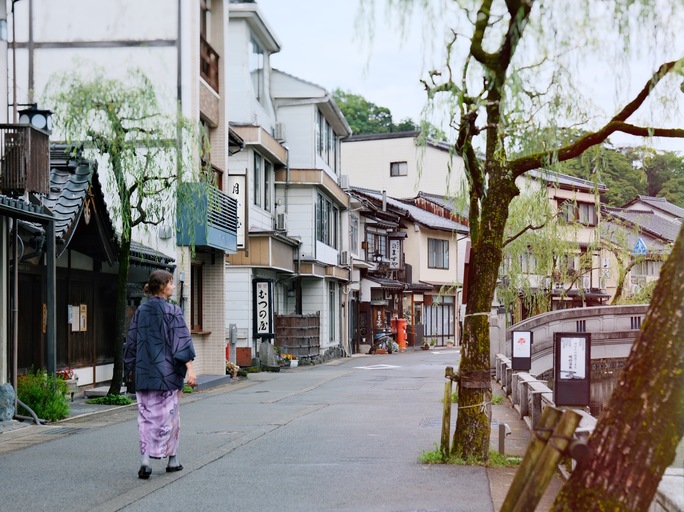
Quiet morning walk in yukata along the Otani River
A unique feature of the place is that almost everyone is wearing yukata (lightweight Japanese kimono). The history of yukata spans over 1300 years, just like Kinosaki Onsen itself.
Born from Japan's bath culture, the yukata has long been cherished as attire worn after bathing. In Kinosaki, wearing a yukata is considered a formal dress, and the sight of travelers strolling the town in the original yukata provided by their inns is a typical and picturesque scene. This has earned Kinosaki the reputation of being a town where the yukata genuinely belongs. The yukata is not just a garment but a symbol of relaxation and enjoyment of the hot springs.
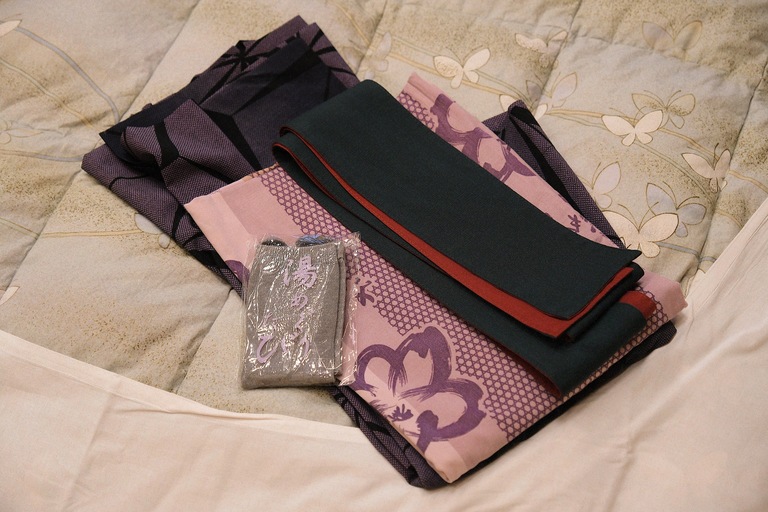
Upon checking in to your hotel in Kinosaki, you can get a yukata for free
The simple way to wear yukata is by staying at one of the numerous inns and hotels around the town, as they usually offer free yukata and geta or zori sandals to walk outside. If it is your first time wearing a yukata or you have concerns about properly wearing one, look at this site: Yukata Guide.
Many people stay in Kinosaki Onsen for a couple of days to explore the area better, leisurely walking from one public bath to another and enjoying the tranquil atmosphere. I also stayed for a night to explore the area to the fullest.
Exploring the Second Oldest Japanese Inn: Sennen No Yu Koman
As Kinosaki Onsen has such a long history, it would be interesting to find the oldest Japanese inn in the area, Sennen No Yu Koman.
Koman is said to have been founded in the first year of the Yoro era (717 AD) during the Nara period. Both Tokyo Shoko Research and famous research companies such as Teikoku Databank recognize Koman as "the fourth oldest company in Japan" and the "second oldest hot spring inn" after Koshu Nishiyama Hot Spring (Yamanashi Prefecture). The Hiuke family has a long-standing connection to Kinosaki and has been running Koman as a family business for 22 generations.
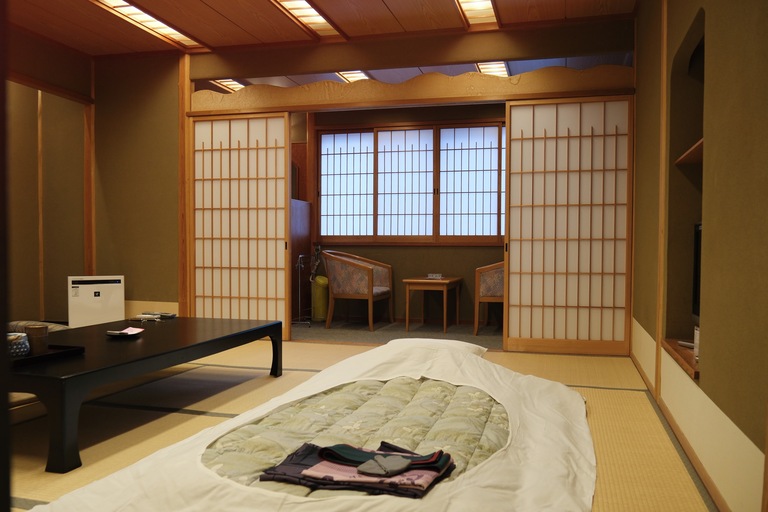
Cozy traditional tatami room at Sennen no Yu Koman
The story goes that the inn was initially named "Mandara-yashiki" after the hot spring that marked the start of Kinosaki Onsen. These days, it offers a relaxing time at the onsen, combined with elegant rooms designed in the sukiya-zukuri style. Since the inn I stayed in is within a three-minute walk of three of the seven famous Kinosaki Onsen hot springs, I decided to refresh and take a bath at one of the public baths.
Explore Seven Public Baths with a Pass
Kinosaki Onsen is renowned for its bath-hopping experience, featuring seven public baths. While the water quality is consistent across all baths, each facility offers a unique atmosphere. Importantly, all hot springs in Kinosaki Onsen are tattoo-friendly!
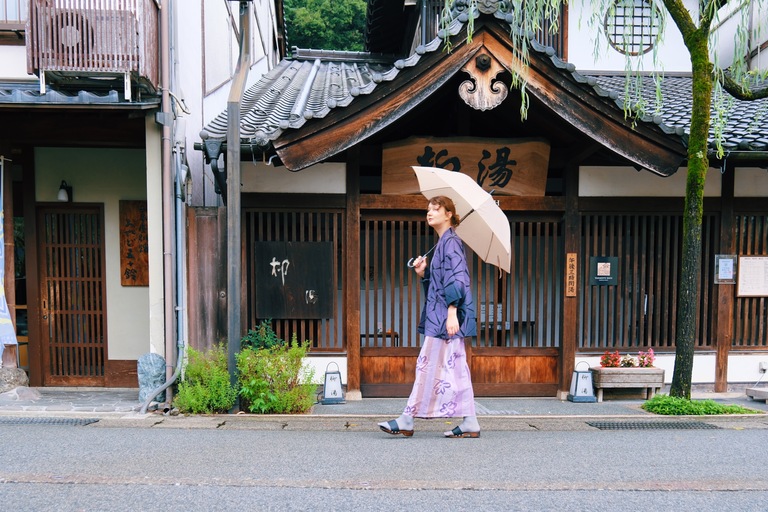
Get a 'Yumepa' One-Day Bath Pass to enjoy bath-hopping in Kinosaki Onsen
For those looking to enjoy a day of bath-hopping, get the 'Yumepa' One-Day Bath Pass. This pass is a cost-effective option that allows you unlimited access to all seven public baths for a whole day. It can be purchased at any public bathhouse for 1,500 JPY per adult and 750 JPY for children. If you plan to visit more than two baths, this pass is a great way to save money and fully experience the variety of hot springs in Kinosaki Onsen. For information about each tub, visit the official site.
The bath that I 100% recommend visiting during a trip to Kinosaki is Goshono-yu, a public hot spring known as the "water of beauty," which brings luck in love.
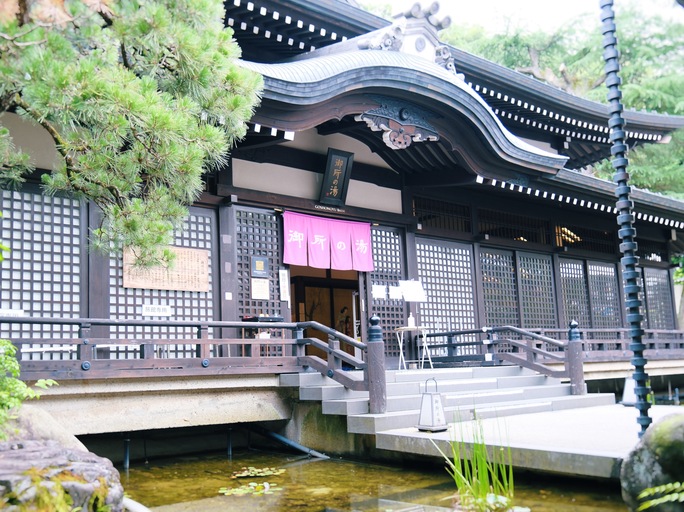
The entrance of the Goshono-yu bathhouse
Constructed to resemble Kyoto's Imperial Palace, the foyer and lounge area are adorned with beautifully painted screens, and the high ceiling panels feature Japanese flower paintings.
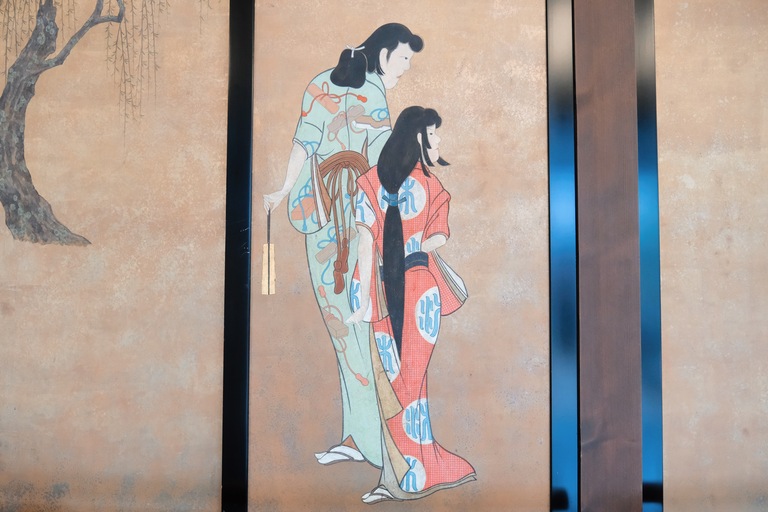
Painted screens along the lounge area of the Goshono-yu
I thoroughly enjoyed the outdoor bath! There's a two-tiered rock bath known as the "Waterfall Open-Air Bath." The upper bath accommodates three people at about 43℃, and the lower one fits eight people and is at around 41℃. A three-tiered waterfall adds such a rustic touch!
When I visited around noon, the spacious bathhouse was almost empty. To choose the best bathing time for yourself, check the current crowd status of all public baths in the system: Bath House Crowd Status.
Activities Besides the Bath
After soaking in the hot springs and relaxing at your ryokan, you can enjoy a quick drink at the long-established Sakamotoya Liquor Store, the only place where you can sip on some local Japanese sake, beer, shochu, and cocktails by the glass.
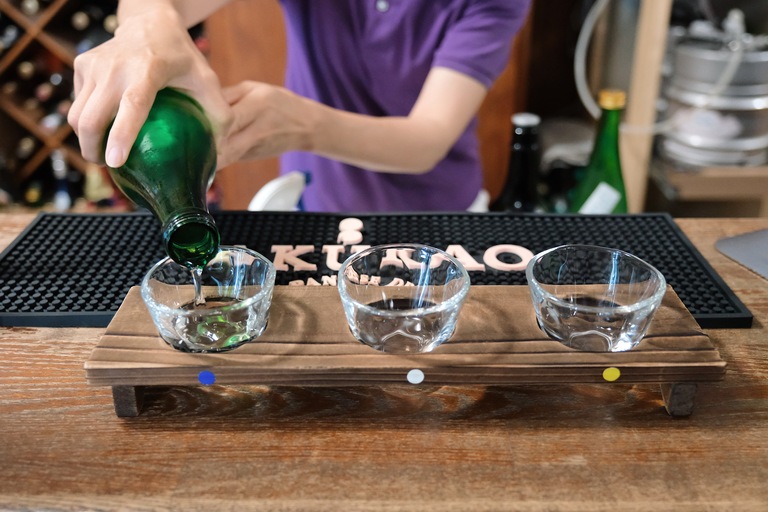
Set of three glasses of local sake for 500 yen at Sakamotoya Liquor Store
Founded in 1728, Sakamotoya has a rich history and offers endless bottles, making it hard to choose what to drink! In this case, try a set of three glasses of local sake for 500 yen. Another option would be getting their original J.junmai sake (unmixed rice sake), called "Kinosaki Yuagari Sake Ubei," created in collaboration with a local sake brewery and named after the shop's first proprietor, Sakamotoya Ubei.
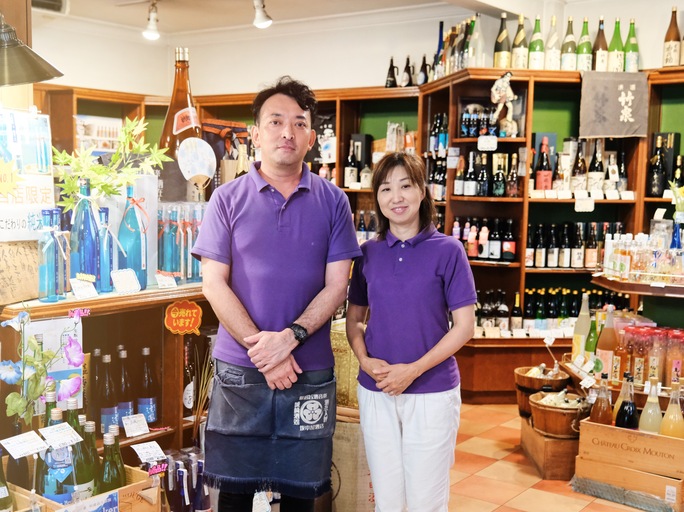
I had such a lovely time chatting with the owners!
As it got darker, I decided to find a place to have dinner. If you're visiting Kinosaki from November to March, try the snow crab of the Sea of Japan. But since I came here in the summer, I decided to go for a seasonal option and visit one of the popular sushi places.
Nestled along the willow-lined Otani River, midway between Ichino-Yu and Jizo-Yu public baths, find Suke Roku Sushi. Founded in 1961, they've been serving sushi with fresh seafood and signature sushi rice, which has remained unchanged for nearly 60 years and features a slightly sweet flavor.
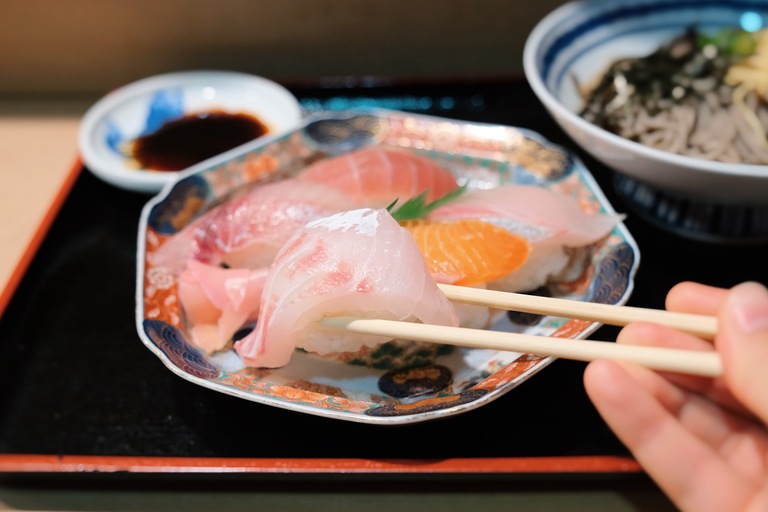
The freshest sushi to try in Kinosaki Onsen at Suke Roku Sushi
Although there are only a few counter-seats, the ample tatami seating comfortably accommodates families and groups. The generous topping portions are fresh and thick, while the rice has a balanced sweetness. Try their sushi set and sushi rolls with unique combinations, such as Tajima beef rolls and so on!
Nostalgic Nighttime Activities
After enjoying the sushi, you can stroll along the main street of Kinosaki Onsen. Walking, you'll notice nostalgic game arcades offering traditional activities like shooting games. I tried my hand at some of these games, reliving childhood memories and experiencing local culture.
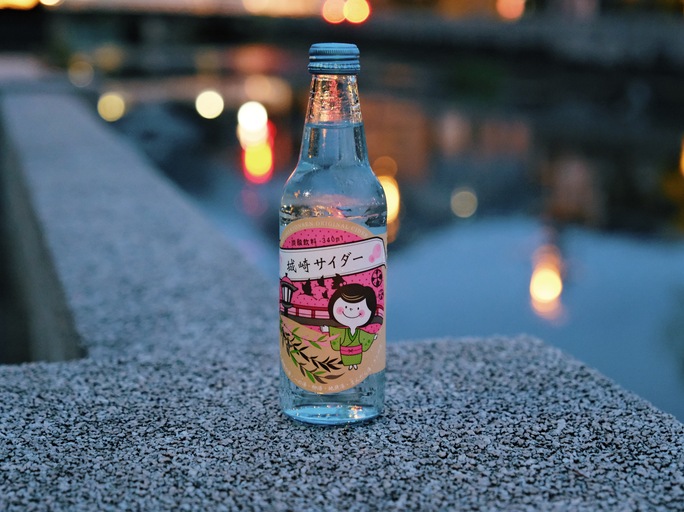
My drink of choice after going to a public bath - Kinosaki Cider
.jpg)
Kinosaki Onsen at nighttime is magical!
Alternatively, you can enjoy a refreshing Kinosaki Cider, a local specialty, and soak in the atmosphere. The soft glow of the lights reflecting off the Otani River creates a picturesque scene, especially with the willow trees swaying gently in the evening breeze.
Take the Kinosaki Onsen Ropeway the Next Morning
The following day, I took the Kinosaki Onsen Ropeway to the summit of Mount Daishi, one of the must-visit attractions in the area. The ropeway ride takes about 7 minutes and offers breathtaking panoramic views of the onsen town and the Sea of Japan.
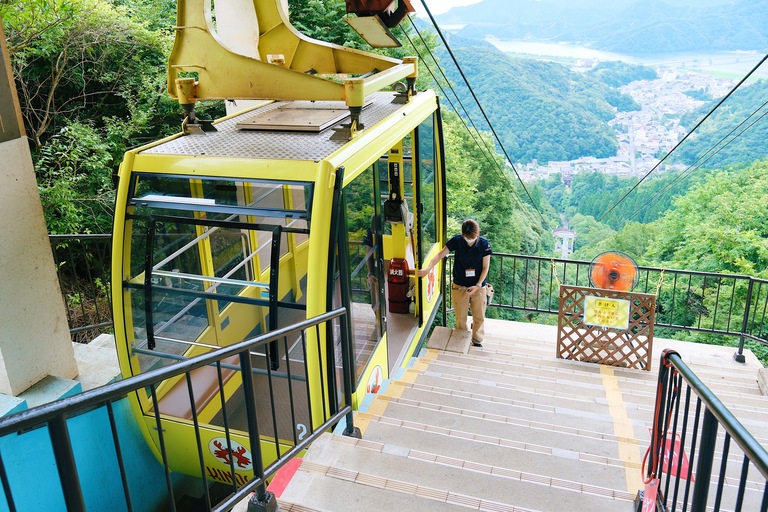
Taking Kinosaki Onsen Ropeway to the summit of Mount Daishi
Proposed by Shiro Otagaki and operational since 1963, the Kinosaki Onsen Ropeway remains a popular experience today. The summit's scenic views and peaceful atmosphere make it a perfect spot for relaxation. To avoid crowds, take the ropeway before 10 AM (the first departure is at 9:10 AM).
Enjoy a cup of coffee while admiring the panoramic view at the Kinosaki coffee Miharashi Terrace Café, located at the summit station.
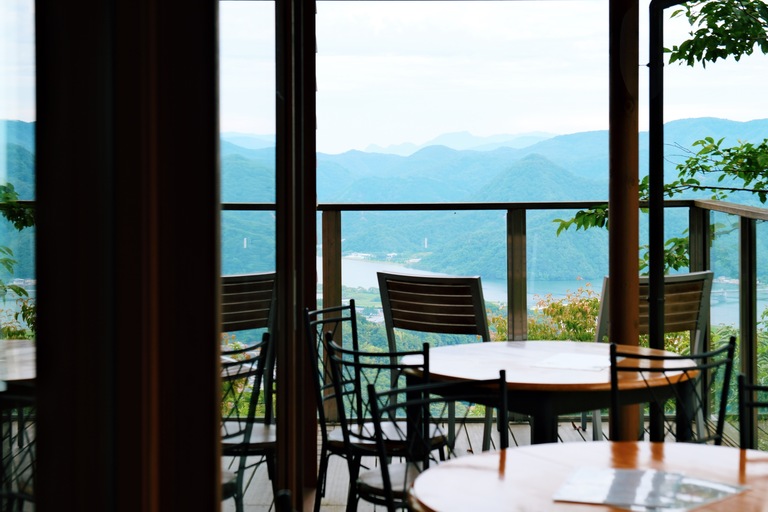
Panoramic seats at the Kinosaki coffee Miharashi Terrace Café
The extensive menu includes specialty coffee, different types of hot dogs, and local desserts. Even if you already have food or drinks, the café's offerings are so appealing that you'll be tempted to order more!
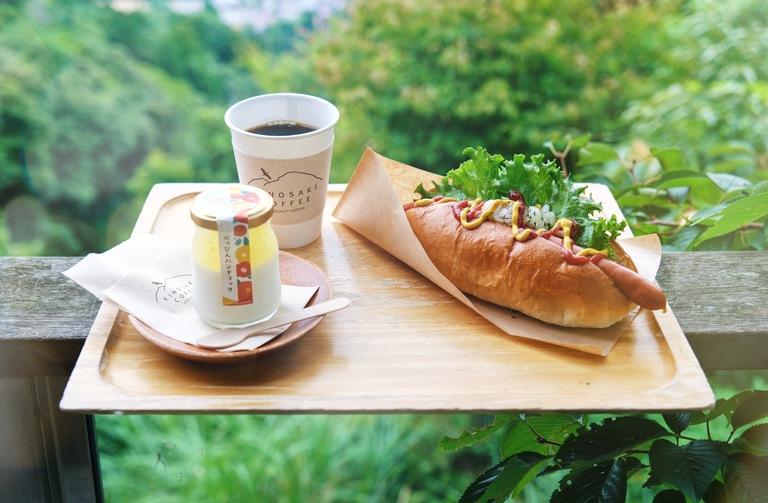
Breakfast with a view
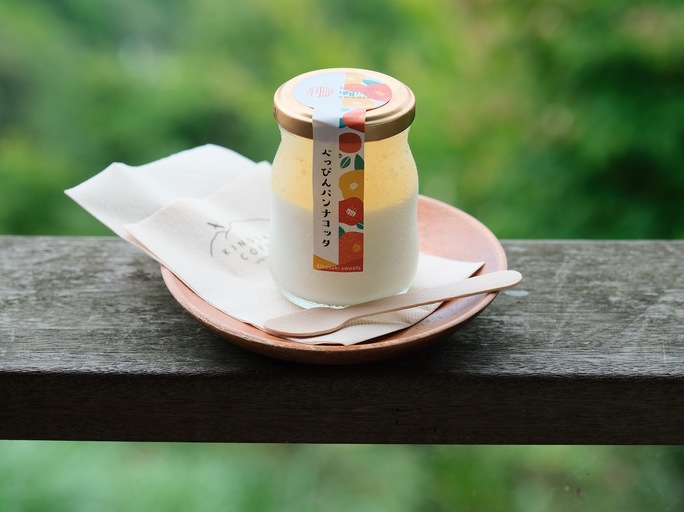
If you like hiking, you can take a path through the mountains leading from the top to To Onsenji Temple instead of taking a ropeway. The route is very picturesque and perfect for a bit of exercise after having breakfast at the Kinosaki coffee Miharashi Terrace Café.
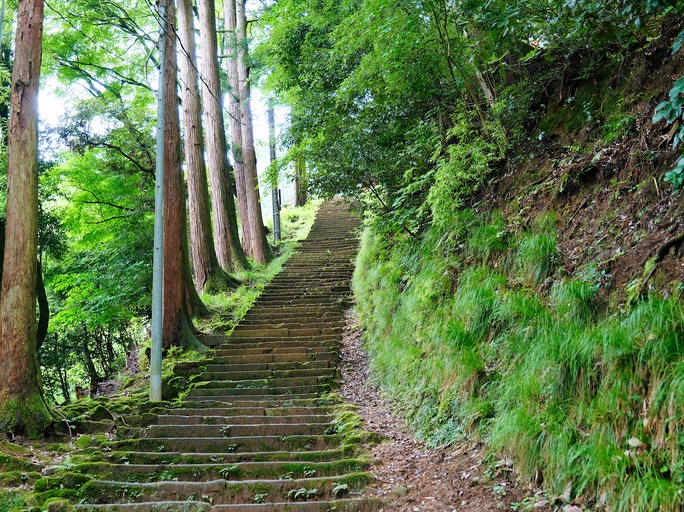
Consider taking the hiking route to Onsenji Temple instead of using the ropeway
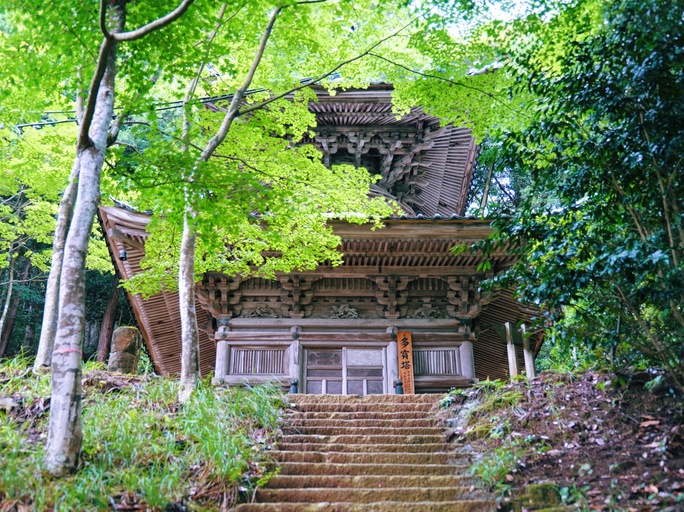
Healthy and delightful An-Doughnuts at Kinosakionsen Ukawa
On my way back to Kinosaki Station, I decided to make one last stop before returning to Tokyo.
Across from Kinosaki Onsen Station, you'll find a lively store with a distinctive design inspired by red bean paste.
Kinosakionsen Ukawa offers uniquely healthy an-doughnuts made using fermented red bean paste to accommodate those with dietary restrictions, like diabetes. The dough is a blend of yam and sweet potato and the red beans paste contains no added sugar.
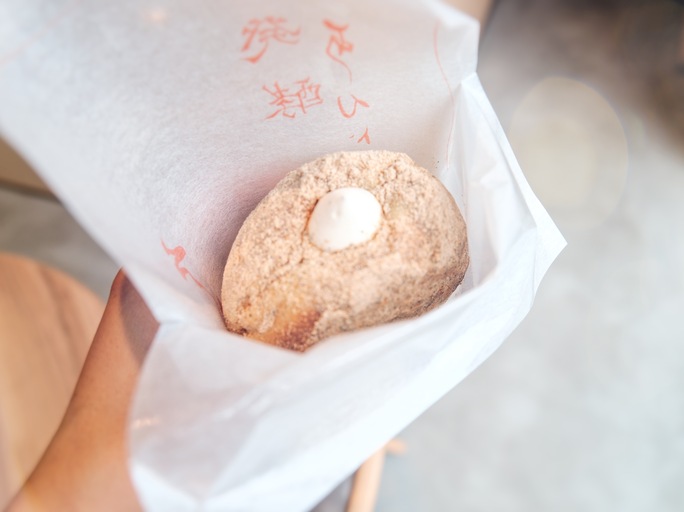
Healthy an-doughnuts made using fermented red bean paste
Here, you can try three types of an-doughnuts: "Fermented An-doughnut," "Tamba Black Bean Kinako," and "Kyoto Uji Matcha." My favorite was the matcha one, which has a rich, smooth flavor that pairs beautifully with the sweetness of the fermented red bean paste.
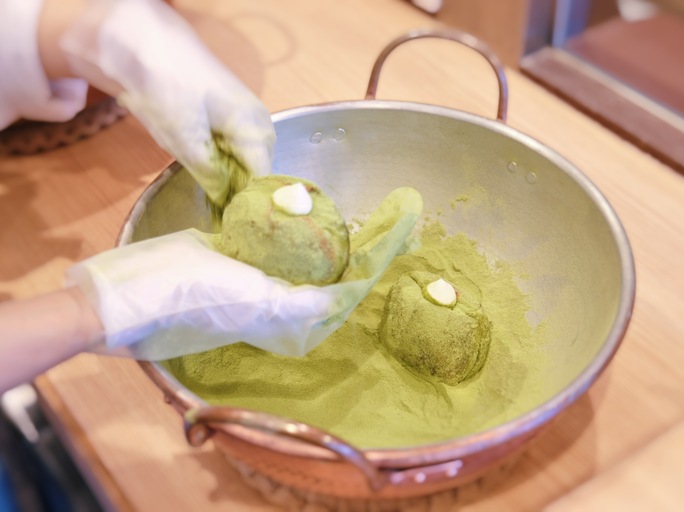
"Kyoto Uji Matcha" doughnuts
The shop's second floor has seating for 24 people, making it convenient for enjoying your treat while waiting for your train.
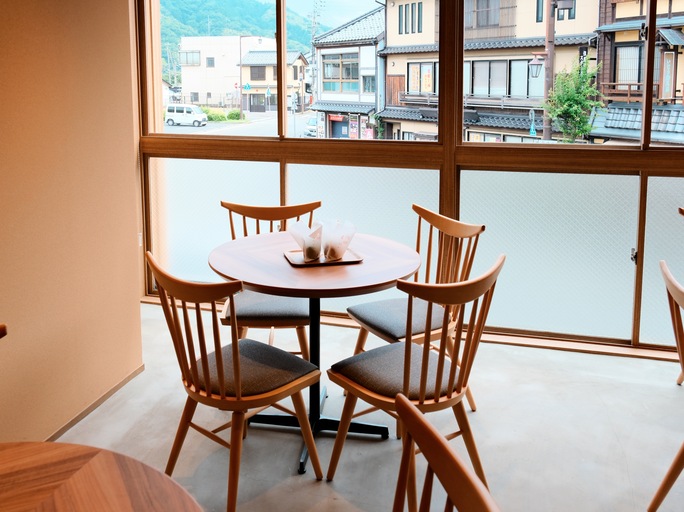
Waiting for my train at Kinosakionsen Ukawa
Conclusion
If you are traveling to Kyoto, Osaka, or Hyogo and looking for a peaceful place to rest, Kinosaki Onsen is the perfect destination. Soak in the healing waters, stroll in a yukata, or savor the local cuisine. The combination of natural beauty, historical significance, and warm hospitality from the locals makes Kinosaki Onsen a must-visit destination for anyone traveling to Japan.



